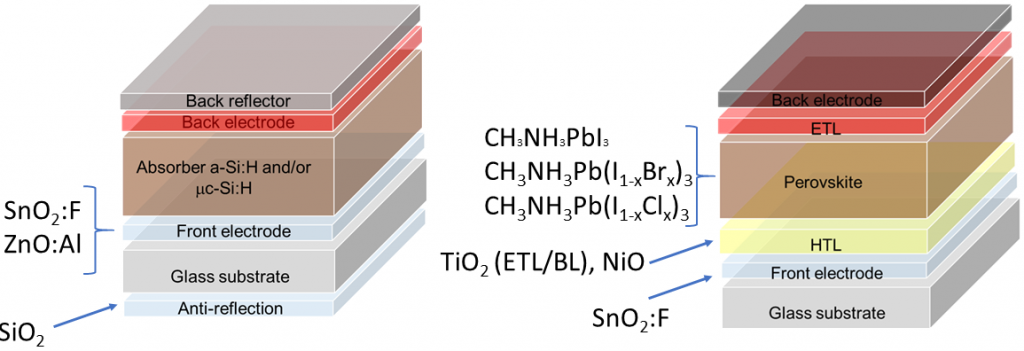Photovoltaics
Major environmental issues due to the effects of climate change have intensified the search for more efficient and cleaner sources of energy. These include solar cells, hydrogen fuel cells and the development of greener methods of hydrogen production. The commercial application of these hinges on their efficiency in producing energy combined with ease and cost of manufacture.

The type of thin film layers and how deposited within PV devices massively affects its performance. Here at Salford, though a range of collaborations (CHEOPS, PLIANT), we have studied this behaviour for electrodes (doped SnO2, ZnO), charge carriers (NiO, TiO2), absorber layers (perovskite) and anti-reflection layers (SiO2). The properties of these films and resulting PV efficiency are tailored via CVD deposition conditions.
This innovative research work has been included in both UG (undergraduate) lectures and within UG final year Physics projects. Recent UG projects include studying the effects on optical and morphological properties of perovskite with different halide compositions, characterisation of PV electrodes, Plasma Enhanced CVD deposition of PV transport layers, formation of high optical haze films for light trapping and the effects of weathering on a variety of films.
If you found this subject interesting and would like to discuss consultancy work or potential new academic collaborations, please contact us. Photovoltaics also forms a key part of many Ph.D. and M.Res. research projects undertaken in the group. Please visit the postgraduate study section of our homepage if you are interested in postgraduate research projects.